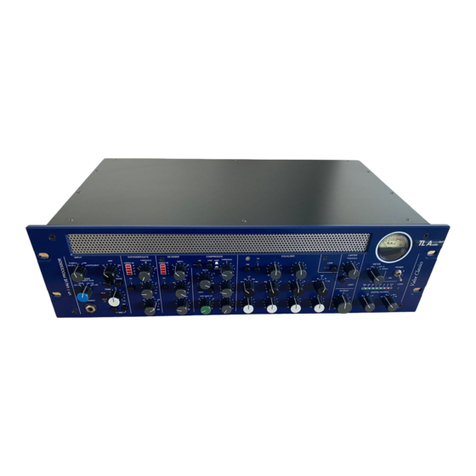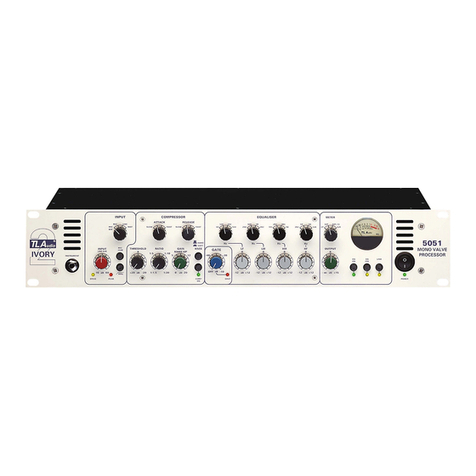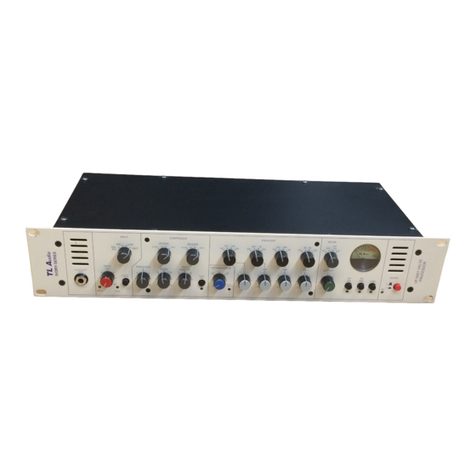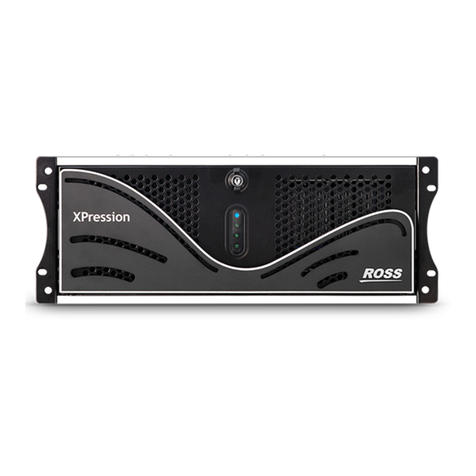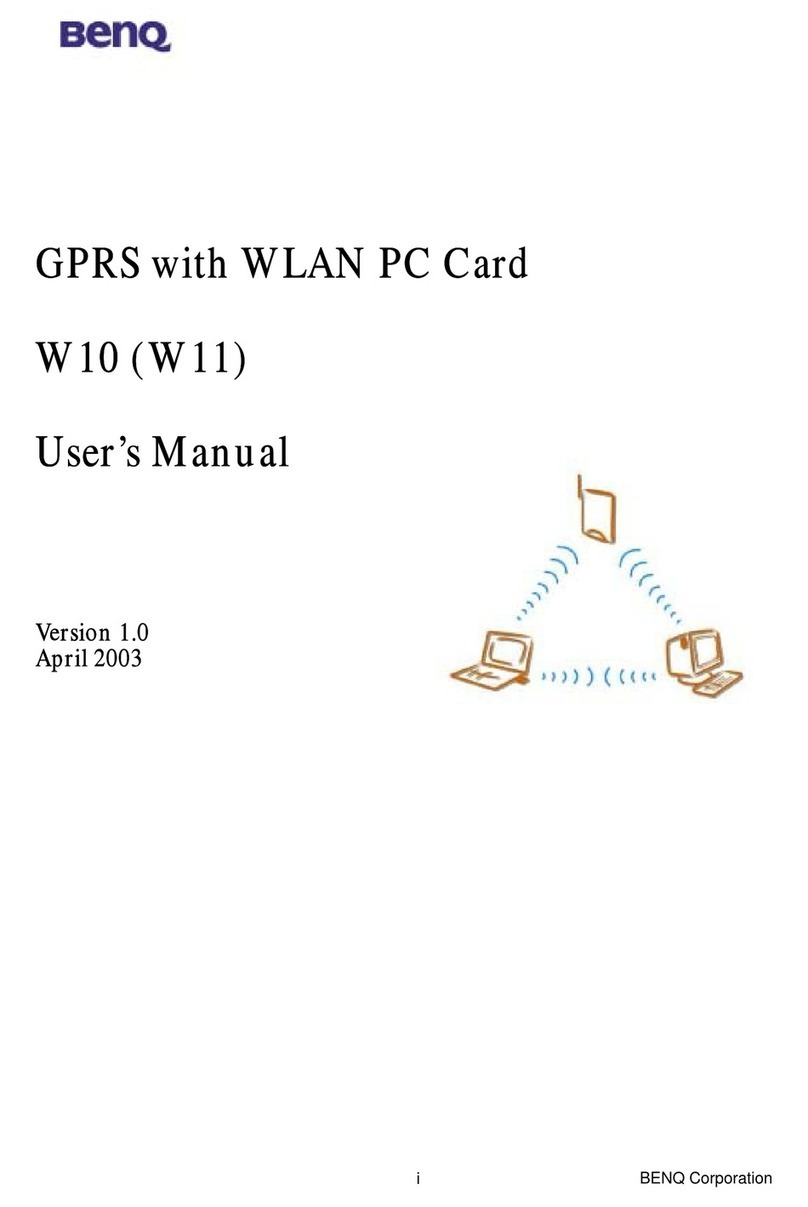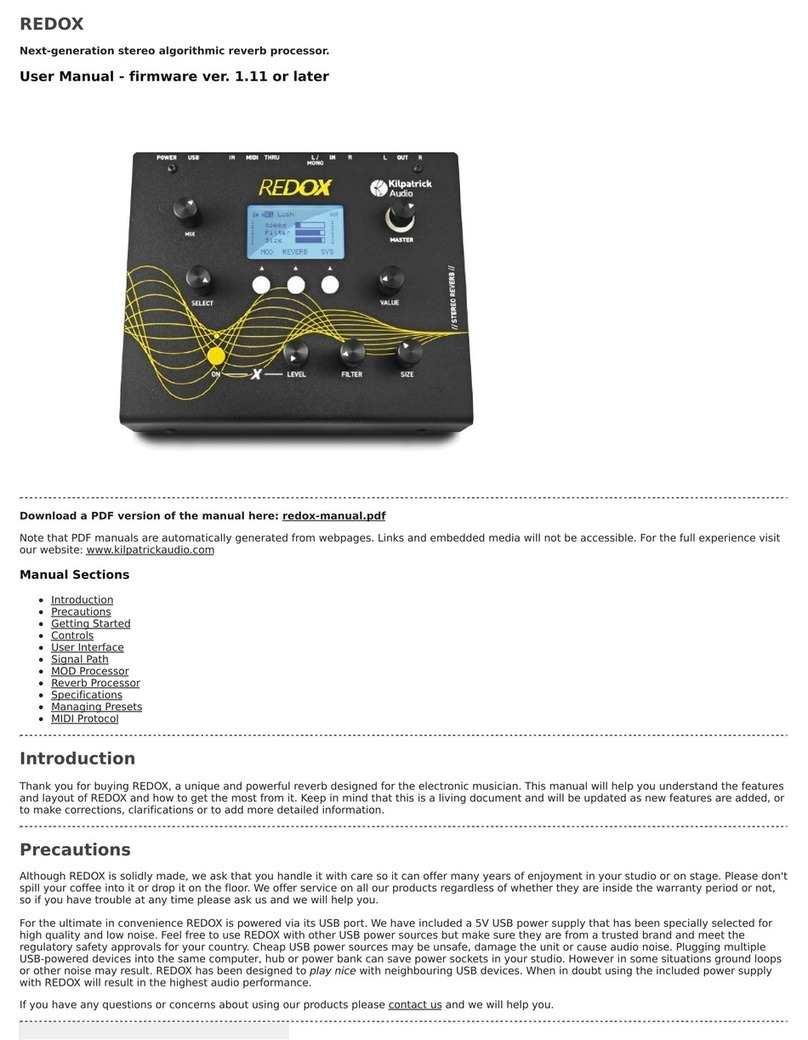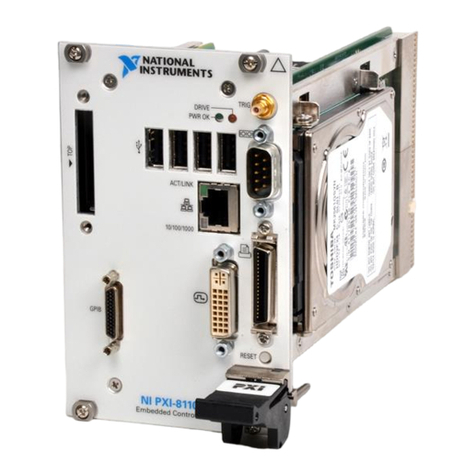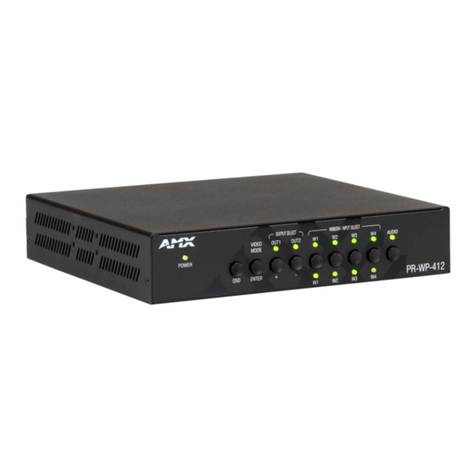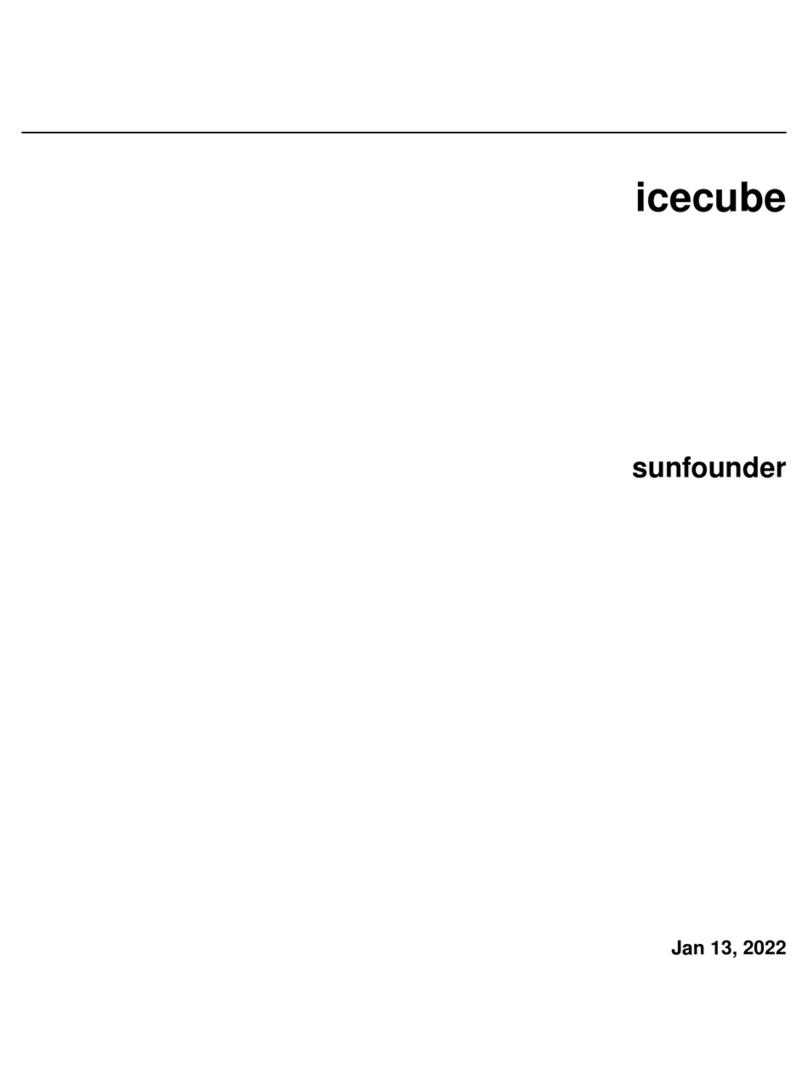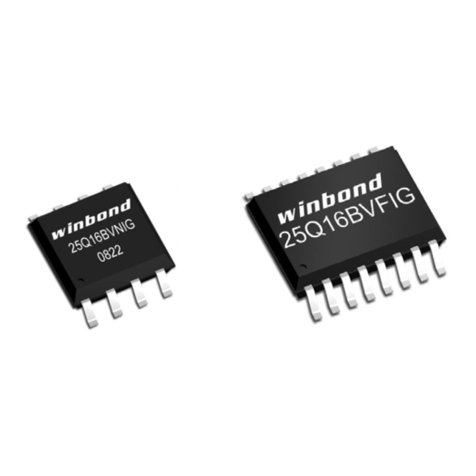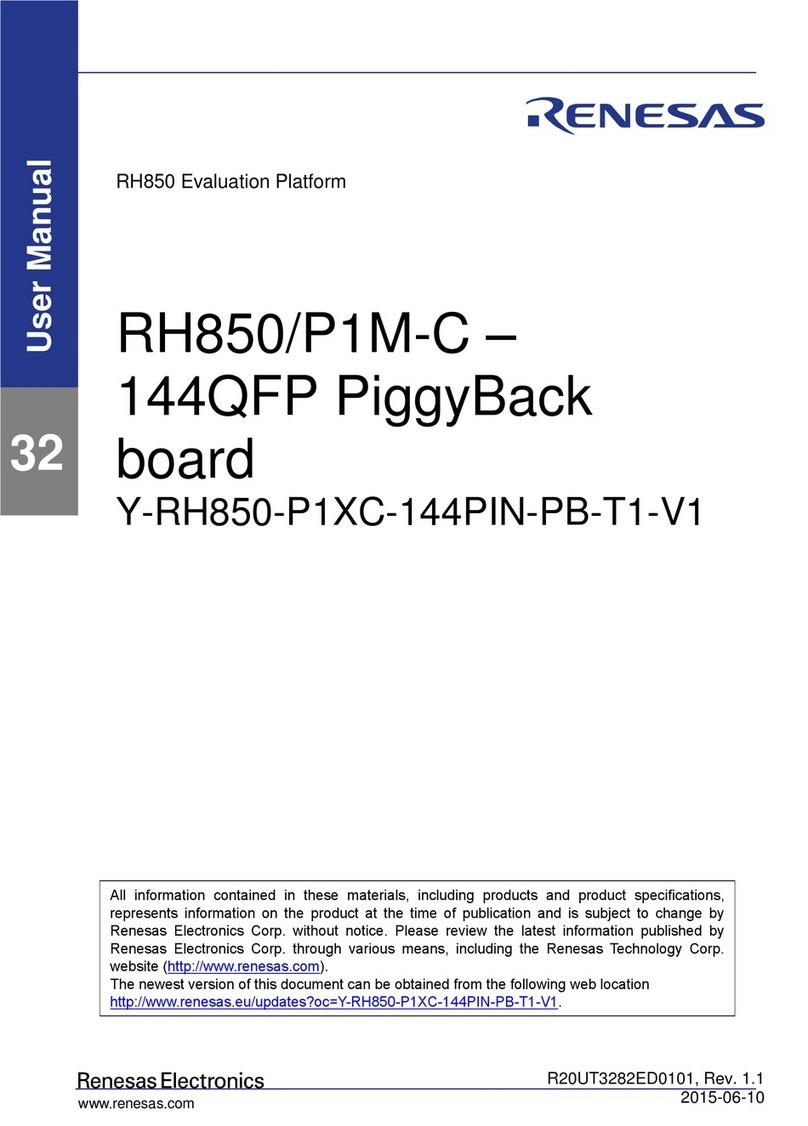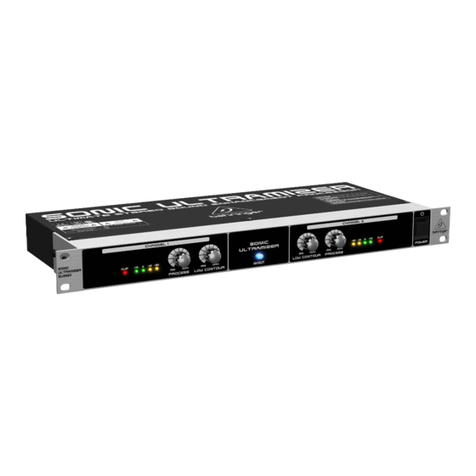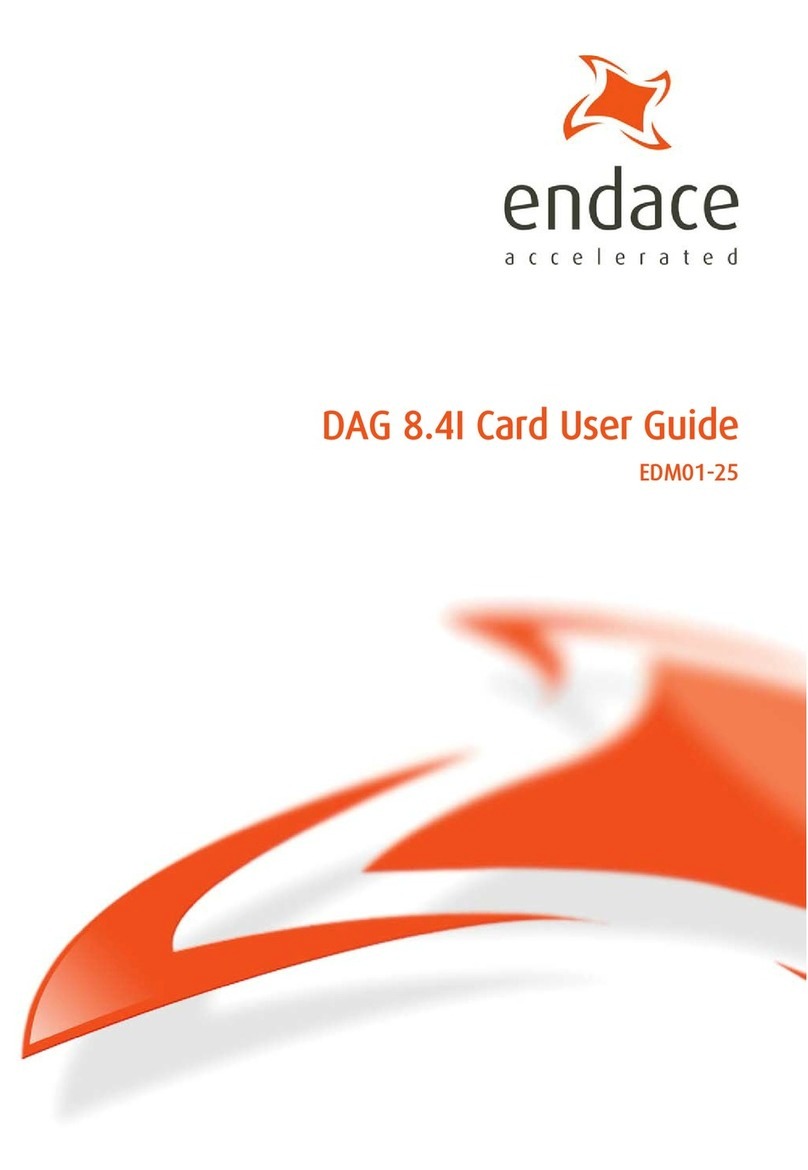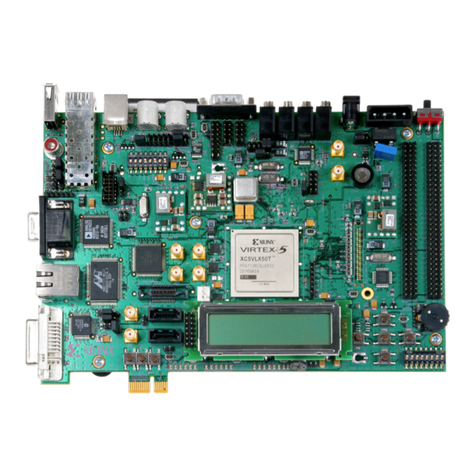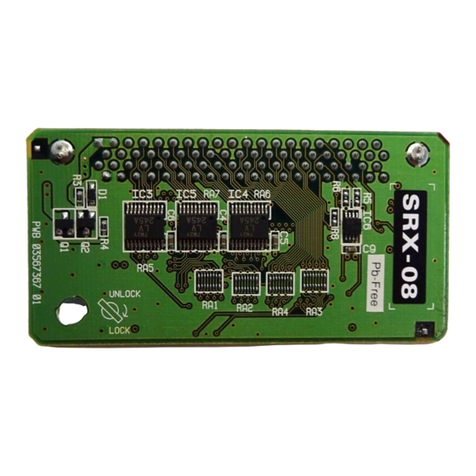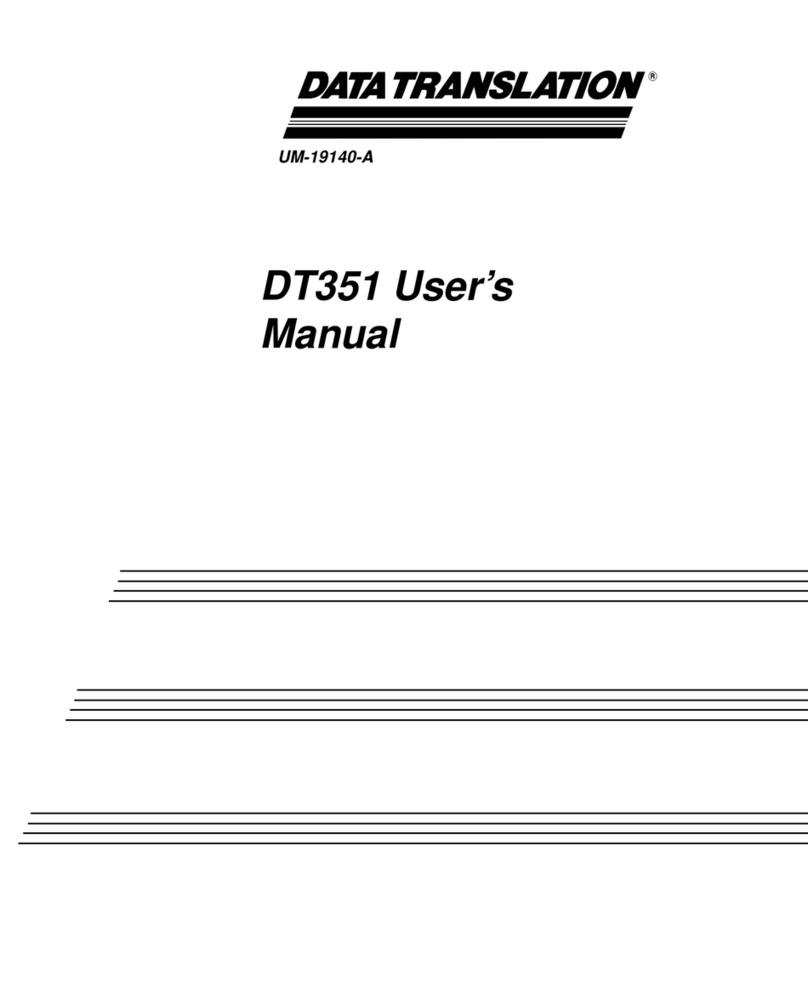T L Audio IVORY 2 5052 User manual

user manual
TL A
udio
®
Ivory 2 Series
5052
STEREO VALVE PROCESSOR
TL Audio Ltd, Letchworth, Herts, SG6 1AN, UK

CONTENTS
1 INTRODUCTION
2PRECAUTIONS
3INSTALLATION
3.1 A.C. Mains Supply
3.2 Microphone Input
3.3 Balanced Line Input
3.4 Unbalanced Line Input
3.5 Instrument Input
3.6 Insert Points
3.7 Sidechain Insert Points
3.8 Line Outputs
3.9 Nominal Operating Level
3.10 Ventilation
3.11 Rear Panel
4OPERATION
4.1 Input Stage
4.2 Microphone Input
4.3 Line Input
4.4 Instrument Input
4.5 30dB Pad Switch
4.6 90Hz Filter
4.7 Phase Reverse
4.8 Drive and Peak LEDs
4.9 Output Gain
4.10 Bypass
4.11 What Is Compression?
4.12 Why Valve Compression?
4.13 Overview of Compressor
Operation
4.14 Threshold
4.15 Ratio
4.16 Attack and Release
4.17 Knee
4.18 Gain Make Up
4.19 Compressor On
4.20 EQ S/C & Frequency Conscious
Compression
4.21 Meter
4.22 Equalisation
4.23 Cut/Boost Control
4.24 Frequency Control
4.25 Q (Bandwidth) Control
4.26 Shelving EQ
4.27 EQ On
4.28 EQ Pre
4.29 Output Limiter
4.30 Stereo Link Modes
4.31 Optional DO-2 Digital
Output Card
5GETTING STARTED
5.1 Connections
5.2 In Use – Mono tracking
mode
5.3 In Use – Stereo mixdown
mode
6FAQ
7SPECIFICATIONS
8SERVICE

1. INTRODUCTION
Congratulations on purchasing the Ivory 5052 Stereo Valve Processor by TL Audio!
The Ivory 2 Series consists of a range of hybrid valve signal processors, which utilise
low noise solid state electronics in conjunction with classic valve circuitry to produce
audio processing units offering very high quality signal paths with the unique valve
audio character. The units offer comprehensive control facilities, whilst remaining
straightforward to operate, and represent excellent value for money.
The 5052 is a dual channel processor with mic, line and instrument inputs, and
features a compressor, four band equaliser and peak limiter on both channels. The
compressor, equaliser and limiter stages can be operated in ‘dual mono’ or ‘linked
stereo’ modes, making the 5052 equally powerful for both mono/stereo tracking and
final stereo mix processing. A pair of illuminated VU meters monitor the input level,
output level, compressor gain reduction and limiter gain reduction for both channels.
The optional DO-2 digital output card allows 24-bit analogue to digital conversion
via an RCA phono type SPDIF output, with selectable 44.1 or 48 kHz sample rates
and the option to clock the converter to an external word clock source.
The block diagram of the 5052 is shown in Figure 1. A solid state, electronically
balanced input amplifier is used to achieve state of the art performance with very low
noise, low distortion and wide bandwidth. An ECC83/12AX7A triode valve stage (run
from a stabilised 150v DC supply) is used as a second stage voltage amplifier, to
obtain the classic valve sound and gradual overdrive characteristics. The preamp
stage also features 48V phantom power, phase reverse, 30dB pad and a high pass
90Hz filter. A Drive LED gives a visual indication of the signal level through valve
stages (and thus the amount of ‘warming’ taking place) while a Peak LED warns that
clipping is about to occur, and this monitors the signal at key points in the audio
path.
The compressor section offers fully variable control of threshold, ratio,
attack/release and gain make-up, and both hard and soft knee options are
available. A ‘Hold’ facility reduces LF distortion, and a side chain insert point is
provided for frequency conscious compression. Like all other TL Audio
compressors, the gain control element of the 5052 compressor stage is based
around a special transconductance amplifier, which avoids the use of VCAs and helps

contribute to the smooth, open sound of the unit, along with a triode valve stage
that forms part of the gain make-up circuit.
A four band valve EQ stage is included, providing up to 15dB of cut or boost on
each band. The LF and HF bands provide swept frequency controls with a choice of
shelving or peaking response. The LM and HM bands are fully parametric with
variable control of gain, frequency and bandwidth. The ‘EQ PRE’ switch places the
EQ ahead of the compressor in the signal path, while the ‘EQ S/C’ switch places the
EQ entirely in the compressor sidechain circuit, for frequency conscious
compression. A triode valve stage is located just after the four EQ filter stages.
A peak output limiter is included, and this is located after the output level control.
This limiter has a high ratio and a fast attack time, making it ideal for prevention of
overload in digital recorders. A threshold control is provided, along with an LED
indication of when the limiter threshold is exceeded.
Mic and line inputs are provided on electronically balanced XLR connectors, and the
line input is duplicated on an unbalanced mono 0.25” jack connector. Balanced and
unbalanced line outputs are provided (on XLR and jack respectively) and these can
be used simultaneously. The operating level of the line input can be shifted from -
10dB to +4dB (unbalanced) or +4dB to +18dB (balanced) via a rear panel switch,
allowing the 5051 to accept very high levels - such as those from a digital recorder. A
pair of high impedance front panel instrument inputs are also provided, thus allowing
guitars, basses and keyboards to feed directly into the 5052, removing the need for
a separate DI box. Finally, balanced insert points (located after the preamp stage
but before the processing stages) and compressor sidechain insert points are
featured. The former allows other external units to be patched into the 5052 signal
path, while the latter permits frequency conscious compression to be performed by
patching in an external equaliser.
Please read this manual fully before installing or operating the 5052.

2. PRECAUTIONS
The Ivory 5052 requires very little installation, but like all electrical equipment, care
must be taken to ensure reliable, safe operation. The following points should always
be observed:
- All mains wiring should be installed and checked by a qualified
electrician,
- Ensure the correct operating voltage is indicated on the rear panel
before connecting to the mains supply,
- Never operate the unit with any cover removed,
- Do not expose to rain or moisture, as this may present an electric
shock hazard,
- Replace the fuse with the correct type and rating only.
Warning: This equipment must be earthed.

CAUTION
RISK OF ELECTRIC SHOCK
DO NOT OPEN
ATTENTION
RISQUE DE CHOC ELECTRONIQUE
NE PAS OUVRIR
Manufactured by TL Audio Limited, England.
SERIAL NUMBER5052 STEREO VALVE PROCESSOR
W/CLOCK
IN
44.1 48
kHz
SPDIF OUTPUT
FUSE T1AL 250V
230V~30VA 115V~30VA
WARNING - ATTENTION
THIS APPARATUS MUST BE EARTHED.
FOR CONTINUED PROTECTION
AGAINST RISK OF FIRE, REPLACE ONLY
WITH SAME TYPE AND RATING OF FUSE.
UTILISER UN FUSIBLE DE RECHANGE DE
MEME TYPE ET CALIBRE
WARNING
TO REDUCE THE RISK OF FIRE
OR ELECTRICAL SHOCK,
DO NOT EXPOSE THIS EQUIPMENT
TO RAIN OR MOISTURE
JACK (UNBALANCED): TIP = +VE, SLEEVE = GND.
JACK (BALANCED): TIP = +VE, RING = -VE, SLEEVE = GND.
JACK (UNBALANCED INSERT): TIP = SEND, RING = RETURN, SLEEVE = GND.
XLR: PIN 1 = GND, PIN 2 = +VE, PIN 3 = -VE.
SIDECHAIN INSERT
(UNBALANCED)
12
OUTPUT (BALANCED +4dBu)
12
OUTPUT
(UNBALANCED -10dBu)
12
LINE INPUT
(UNBALANCED)
-10dBu
+4dBu
12
INSERT
(BALANCED +4dBu)
LINE INPUT LEVEL
SEND 1 RETURN 1 SEND 2 RETURN 2
LINE INPUT (BALANCED)
+4dBu
+18dBu
12
MIC INPUT (BALANCED)
12
MIC LINE
MIC INST
48V
PEAKDRIVE
LIMITON (PULL)
INPUT GAIN
MIC(LINE)
BYPASS
PH REV
COMP
EQ
ON
PK
SHLV LIM
+10dB
EQ
LIMITER POWER
ON
METERS
STEREO MODE
(CH1 MSTR)
EQUALISER 1
+16(-20) dB +60(+20)
+38 (0)
INPUT GAIN
MIC(LINE)
+16(-20) dB +60(+20)
+38 (0)
OUTPUT
GAIN
-oo dB +15
0
0dB +20
+5 +12
HF
0
-15 dB +15
3K Hz 20K
6K 12K
HM
0
-15 dB +15
1K Hz 12K
2K 6K
LM
0
-15 dB +15
100 Hz 3K
300 1K
LF
0
ATTACK RELEASE
RATIOTHRESHOLD GMU
-15 dB +15
30 Hz 1K
100 300
FAST SLOWFAST SLOW
1:1.5 1:30
1:5 1:10
+10 dB -20
0 -10
0 dB 20
5 12
INPUT 1
COMP1
INST
INPUT 1
O/P COMP G/R
I/P LIM G/R
1 2
90Hz
MIC
-30dB
MIC LINE
MIC INST
48V
PEAKDRIVE
LIMITON (PULL)
BYPASS
PH REV
LIMITEROUTPUT
GAIN
-oo dB +15
0
0dB +20
+5 +12
INPUT 2
90Hz
MIC
-30dB
EQ
PRE
ON KNEE EQ
S/C
PK
SHLV
HARD
SOFT
EQ
ON
PK
SHLV
EQUALISER 2
HF
0
-15 dB +15
3K Hz 20K
6K 12K
HM
0
-15 dB +15
1K Hz 12K
2K 6K
LM
0
-15 dB +15
100 Hz 3K
300 1K
LF
0
ATTACK RELEASE
RATIOTHRESHOLD GMU
-15 dB +15
30 Hz 1K
100 300
FAST SLOWFAST SLOW
1:1.5 1:30
1:5 1:10
+10 dB -20
0 -10
0 dB 20
5 12
COMP2
INST
INPUT 2
EQ
PRE
ON KNEE EQ
S/C
PK
SHLV
HARD
SOFT
5052
STEREO VALVE
PROCESSOR
FIG 2: FRONT PANEL
FIG 3: REAR PANEL
INSTRUMENT INPUT COMPRESSOR SECTION EQ SECTION STEREO LINK SECTION
INPUT SELECTOR SWITCH LIMITER SECTION VU METERS
IEC INLET OPTIONAL DO-2 OUTPUT CARD MIC INPUTS
SIDECHAIN INSERT POINTS LINE OUTPUTS INSERT SEND/RETURN POINTS LINE INPUTS

3. INSTALLATION
3.1 AC Mains Supply.
The unit is fitted with an internationally approved 3 pin IEC connector. A mating
socket with power cord is provided with the unit, wired as follows:
Brown: Live.
Blue: Neutral.
Green/Yellow: Earth (Ground).
All mains wiring should be performed by a qualified electrician with all power switched
off, and the earth connection must be used.
Before connecting the unit to the supply, check that the unit is set for the correct
mains voltage. The unit is internally set for 110-120V 60Hz or 220-240V 50Hz
operation, and should only be changed by an authorised service centre. The mains
fuse required is 20mm anti-surge, 1AT rated at 250V. If it is ever necessary to
replace the fuse, only the same type and rating must be used. The power
consumption of the equipment is 30VA.
Warning: attempted operation on the wrong voltage setting, or with an incorrect
fuse, will invalidate the warranty.
3.2 Microphone Input.
The microphone input is via 3 pin female XLR connector, suitable for balanced or
unbalanced microphones. The mating connector should be appropriately wired as
follows for balanced or unbalanced operation:
Balanced inputs:
- Pin 1 = Ground (screen).
- Pin 2 = Signal Phase (also known as “+” or “hot”).

- Pin 3 = Signal Non-Phase (“-” or “cold”).
Unbalanced inputs:
- Pin 1 = Ground (screen)
- Pin 2 = Signal Phase (“+” or “hot”).
- Pin 3 = Signal Ground.
3.3 Balanced Line Input.
The 5052 has a 3 pin XLR socket on the rear panel, which will accept both balanced
and unbalanced line level inputs. The mating connector should be appropriately
wired as follows:
Balanced inputs:
- Screen = Ground,
- Tip = Signal Phase (“+” or “hot”),
- Ring = Signal Non-Phase (“-” or “cold”).
Unbalanced inputs:
- Screen = Ground,
- Tip = Signal Phase (“+” or “hot”),
- Ring = Ground.
When using unbalanced signals, the signal ground may be obtained by linking pins 1
and 3 in the mating XLR connector. If this connection is not made, a loss in level may
result.

3.4 Unbalanced Line Input.
An unbalanced line level input at a nominal level of -10dBu is also provided, on a
0.25” mono jack socket. The mating plugs should be wired as follows:
- Tip = Signal Phase (“+” or “hot”).
- Screen = Ground.
3.5 Instrument Input.
Each channel has a 0.25” jack socket on the front panel (see Figure 2). A 2 pin
(mono) jack plug is required, which should be wired as follows:
- Tip = Signal Phase (“+” or “hot”),
- Screen = Ground.
Good quality screened cable should be used, particularly for microphone or low level
sources, to prevent hum or noise pickup.
3.6 Insert Points.
The insert points are interfaced via a pair of 3 pin, 0.25” jack sockets on the rear of
the unit. These points (not to be confused with sidechain insert points – see section
3.7) are located after the initial preamp stage but before the compressor stage, and
allow an external device to be patched into the 5052 signal path.
One socket is marked ‘Send’ (which connects to the external device’s input) while
the other is marked ‘Return’ (which connects to the external device’s output).
The pin connections for both Send and Return are:
- Sleeve = Ground,
- Tip = Signal Phase (“+” or “hot”),
- Ring = Signal Non-Phase (“-” or “cold”).

The insertion points are balanced, and operate at a nominal level of +4dBu.
3.7 Sidechain Insert Points.
The sidechain insert points allow access to the 5052 compressor sidechain (i.e. for
frequency conscious compression – see section 4.20) and are interfaced via a 3 pin,
0.25” switched jack socket on the rear of the unit. The pin connections are:
- Sleeve = Ground,
- Tip = Send,
- Ring = Return.
The sidechain insert point is unbalanced, and operates at a nominal level of -2dBu .
If used as an additional send only (e.g. as a send to a tape machine or monitor
mixing desk), the Tip and Ring should be wired together, to preserve the signal path
through the insertion point. If connecting the 5052 sidechain insert to a patchbay it is
important to ensure that the ‘send’ and ‘return’ are connected together when not in
use – if the send/return circuit is left open then this can cause incorrect operation of
the compressor stage.
3.8 Line Outputs.
The line outputs are provided on a balanced XLR connector, and also via an
unbalanced _” jack. Balanced operation is always preferable to maintain maximum
headroom and signal to noise ratio, but can only be used if the following equipment
is also capable of balanced operation:
Balanced outputs:
- Screen = Ground,
- Tip = Signal Phase (“+” or “hot”),
- Ring = Signal Non-Phase (“-” or “cold”).

Unbalanced outputs:
- Screen = Ground,
- Tip = Signal Phase (“+” or “hot”),
- Ring = Ground.
3.9 Nominal Operating Level.
A switch on the rear panel allows the line inputs to be matched to equipment at a
nominal operating level of +4dBu or -10dBu for unbalanced signals, and +18dBu or
+4dBu for balanced signals. Most professional equipment requires +4dBu
(approximately 1.2V rms), but some small mixing consoles, portable tape recorders or
domestic audio equipment require -10dBu (approximately 225mV rms). Digital
multitrack recorders have very high signal levels due to the digital scale of 0dBFS
usually matching +18dBu in the analogue domain. The 5052 is able to match the
operating level of such recorders, using the +18dBu setting. If the operating level is
not known, the switch should be set to the position which results in the best signal to
noise ratio and least noise while being able to handle high signal levels.
3.10 Ventilation.
The 5052 generates a small amount of heat internally, mainly due to the valve heater.
This heat should be allowed to dissipate by convection through the side grills, which
must not be obstructed. Do not locate the 5052 where it will be subject to external
heating, for example, in the hot air flow from a power amplifier or on a radiator.
3.11 Rear Panel.
The rear panel connectors are identified in Fig.3. Make sure that all settings, mains
and audio connections have been made as described above before attempting to
operate the equipment.

4. OPERATION
4.1 Input Stage.
The Input Gain control sets the level of the mic, line or instrument input into the 5052
preamp stage. The signal source is selected by the 4-position switch adjacent to the
Input Gain control. Input choices are Mic 48V (for condenser microphones that
require phantom power), Mic (for dynamic or most ribbon microphones), Line and
Instrument. The Instrument input allows high impedance instruments such as guitars
or a bass etc to connect directly into the 5052 and eliminates the need for a Direct
Injection Box. A wide range of signals can be fed into the 5052, and the Input Gain
control also allows the valve stages to be driven to a variable degree. After the
preamp stage the signal passes through a triode valve stage positioned between the
input circuit and the compression stage. Increasing the input gain pushes more signal
level into the valve, thus generating more harmonic distortion and creating that
special “valve sound”. This is indicated by the yellow ‘Drive’ LED which will glow more
intensely as the level increases. At the same time the output level can be turned
down to preserve the same level at the output, so a choice of sounds is available.
For a more pronounced valve sound, turn up the input gain and reduce the output
gain, and vice versa for a cleaner sound. Don’t be afraid to push the 5052 hard!
As well as driving the valves harder, increasing the Input Gain control setting will also
have a pronounced effect on the amount of compression as the threshold will remain
constant as the input level increases. If the input gain is adjusted, the threshold can
be adjusted accordingly to maintain a similar amount of compression.
4.2 Microphone Input.
When using the 5052 with a microphone source, care should be taken not to apply
too much gain at the input. Start with the input gain control set to minimum, and the
output master at the mid-point (12 o’clock position). The input gain can then be
gradually increased until the VU meter registers about 0VU on normal signal level,
when set to read ‘I/P’. The master output level should then be adjusted to produce
the required output.
CAUTION: Never switch phantom power on or off, or plug / unplug a
microphone with phantom power applied unless the output level control is turned
down. Failure to do so may result in a thump in your monitor loudspeakers or PA
system.

4.3 Line Input.
A line level signal should already be at about the correct operating level, but this may
be checked by monitoring the level with the VU meter set to ‘I/P’. The input gain
should be adjusted until the meter reads about 0VU at normal audio level.
4.4 Instrument Input.
The front panel instrument input socket is suitable for low level sources such as hi
impedance microphones, pick ups or passive guitars, and higher level sources such as
active guitars and keyboards. To cater for this wide variety of sources, the 5052 has
a large amount of gain available, and care should be taken to avoid applying
excessive input gain with a high level source.
4.5 30dB Pad Switch.
Occasionally - when using sensitive condenser microphones - the source signal may
be too loud for the input preamp. In this situation, to avoid any overloading or
distortion of the mic preamp stage, the 30dB pad can be used to reduce the input
gain to a more manageable level. The 30dB pad only applies to the microphone
input.
4.6 90Hz Filter.
The high pass filter switch restricts the low frequency response of the preamp, to
effectively remove rumble or LF noise from the signal. The filter can be useful in
restricting “popping” on vocals or even low frequencies caused by contact with
microphone stands or microphone cables. Popping is an undesirable thump that is
caused by close-miking certain spoken or sung letters, namely “P” or “B”. These
particular letters cause a sudden expulsion of air that can result in an audible thump.
As this thump has a lot of low frequency content the high pass filter can help to
reduce the problem, as can using a pop filter (a device usually made out of nylon
material similar to stockings) suspended in front of the microphone.
4.7 Phase Reverse.
The phase reverse switch allows correction of a phase error, which may have
occurred in microphone wiring or placement. Phase errors can be due to two

microphones picking up the same signal at the same time. An example of this problem
is when recording a snare drum with one microphone on the top snare skin and a
second microphone on the underside skin of the snare drum. Because the two
microphones are picking up the same signal at the same time, phase cancellation can
occur. By inverting the phase of one of the microphones this problem can be
rectified. A phase mis-match will probably manifest itself as an apparent loss of bass
content when two microphone signals are mixed together or fed to a stereo pair of
loudspeakers. If an error is suspected, it is a simple operation to check by phase
reversing each channel in turn. The phase reverse is active on mic, line and instrument
inputs.
4.8 Drive and Peak LEDs.
The yellow Drive LED provides a visual indication of the signal level through the valve
stages, and therefore the extent of “warming” or valve character being introduced.
The drive LED will gradually illuminate as the input level or gain is increased, over the
range +6dB to +16dB.
The red Peak LED operates as a conventional warning that clipping is about to
occur. The operating level of the entire signal chain is monitored, and the LED
illuminates when an internal level of around 19dB is reached. Normal operation would
be to set the input gain so that the drive LED is regularly illuminating, with occasional
lighting of the red Peak LED on transients.
If the input and output gain controls are set to their centre (0dB) positions, the
Peak LED will illuminate some 3dB after the Drive LED has reached its full intensity.
However, it is possible to add gain further down the chain (i.e. output level gain),
which will cause the Peak LED to illuminate at a lower level of Drive. This situation
implies that a high level of “clean” signal is present, without driving the valves hard.
4.9 Output Gain.
This controls the level at the 5052 outputs. The nominal level is 0dB at the centre
detented position. This control effectively acts like an output fader, and is very
useful when recording direct to tape or hard disc through the 5052. You may find
that some digital recorders require a good deal of input level in order to register a
0dB reading on their meters (+18dBu analogue usually matches 0dBFS in the digital
scale). This is normal, since many digital recorders are designed to preserve
headroom and keep the signal well below the 0dB clip point - thus preventing the
recorder distorting. The 5052 provides a further 15dB of gain at the output fader to

drive digital recorders. It is important to distinguish the difference between the
output gain knob and the gain make-up knob in the compressor section. The gain
make-up control is only active when the compressor is switched on. The output gain
control is always active but will have no effect on the compression characteristics of
the signal.
4.10 Bypass.
The Bypass switch is a convenient way of bypassing the compressor, EQ and limiter
sections on either channel so that the original and processed signals can be easily
compared. This avoids having to individually bypass each of these sections to hear
the original signal. Please note that all status LEDs remain active in these sections
even when bypassed, and the meters will continue to register any gain reduction
occurring.
4.11 What is Compression?
Compression is an essential but often misunderstood process in modern recording.
Put simply, compression reduces the difference between the loudest and the
quietest levels of an audio signal. This is known as reducing the “dynamic range” of
that signal and is a powerful tool for an engineer helping to avoid overloading,
distortion problems as well as raising the level of the quieter parts of the audio signal.
Before the introduction of compressors the only way this could be achieved was by
“gain riding”, whereby an engineer would control the fader manually in order to try
and anticipate very large levels (which might distort the signal) or very low levels
(which may get lost in noise). The introduction of compression devices meant that
this process could be controlled automatically, allowing the engineer to get on with
more productive jobs!
Many instruments and voices have a very wide dynamic range that need to be
controlled. A singer, for instance, may be singing quietly one moment and very loudly
the next, and unless compression is applied the vocal won’t “sit” correctly in the mix,
in addition to the problems of distortion on loud passages and noise on quiet ones.
Compressors effectively turn down the loud bits and turn up the quiet bits, to
achieve a more even and controllable level.
Compressors are often judged by their ability to control the dynamics without
creating noticeable audible side effects. Heavy compression can cause the signal to
pump or breathe with the onset and release of the compression. Some compressor
designs can dull the signal and lose the top end of the signal. The 5052 compressor

design, as with other TL Audio compressors, uses a technology based around a
transconductance amplifier rather than a VCA design. This transconductance
amplifier design is known for being able to retain the full frequency range and natural
character of the audio signal, even when compressing the signal quite heavily. The
Ivory 5052 is also capable of more severe compression based around the optional
Hard Knee mode if this is desired.
There are other benefits of compression as well as just controlling the peaks and
raising the quiet parts, applied properly, it can add punch and excitement to music,
as well as fattening up sounds and creating a more professional sounding recording.
With the 5052, you have the added benefit of valve stages in the signal path, which
create a warmth and presence just not obtainable with solid state or digital products.
4.12 Why Valve Compression?
Valve compression yields a particularly special sound which has become very sought
after, particularly with the widespread use of digital products. The reason valve
equipment sounds special is due to two things: harmonic distortion and natural
compression. When the signal through a valve is increased, it tends to generate a
particular type of subtle and desirable distortion, called “second harmonic”
distortion. This has the effect of thickening and warming the sound, and the more
the level you feed to the valve stages, the more of this harmonic distortion will be
produced. You should be able to hear this effect as you increase the Input Gain on
the 5052.
Secondly, valves will tend to naturally compress an audio signal, again particularly as
the signal level is increased. This itself also contributes to the warmth produced by
the 5052.
4.13 Overview of Compressor Operation.
To operate the 5052 compressor successfully an understanding of each control will
help to obtain the best results. If you are unfamiliar with the effect of compression it
may help to adjust the controls to extreme settings and listen to the sonic effect.
Compressors can either be used to enhance the signal and control the dynamic
range with as little sonic effect as possible, or they can be used more severely
specifically for effect.

4.14 Threshold.
The Threshold is the point measured in decibels that any compression comes into
operation. The Threshold control is variable from +10dB in the most anticlockwise
position to -20dB at the most clockwise position. Any signal below the Threshold
passes through the unit unaffected; while signals above the Threshold are reduced in
gain (and are thus ‘compressed’). This does depend on the Soft or Hard knee to
some extent as the Soft knee is more gradual around the Threshold point.
Unlike some compressors, the Threshold control on the 5052 starts at a ‘plus’ value
in the counter-clockwise position, and decreases to a ‘minus’ value as you rotate the
control clockwise. The reason for this is as you turn the Threshold control on the
5052 clockwise (i.e. towards the negative region) then the degree of compression will
increase. We think this is logical, whereas the common method of turning the control
‘down’ to achieve more compression is not - but beware, some other compressors
may work in the opposite direction!
4.15 Ratio.
Once the input signal has crossed the threshold, the degree of gain reduction is
determined by the Ratio control. The Ratio control is calibrated in decibels and is
simply the change in output level that results from a given change in input level. An
uncompressed signal will have a 1:1 compression ratio - every 1dB change in input level
results in the same 1dB change in output level. A compression ratio of 1:3, for
instance, means that a 3dB change in input level will only give a 1dB change in output
level. For more severe compression, simply turn up the Ratio control.
The 5052 offers a wide range of ratios from 1:1.5 (very gentle compression) through
to 1:30 (very severe compression).
4.16 Attack and Release.
The Attack time sets how quickly the compression is applied once the threshold has
been exceeded, and the Release time sets how quickly the compression is released
(and the signal returns to normal) once the signal drops back below the threshold.
The 5052 allows fully variable control of Attack and Release times between
‘Slow’ and ‘Fast’. For Attack this covers the range 0.4mS to 40mS, while the Release
control spans 40mS to 4S. There is an element of automatic operation of the Attack

and Release on the 5052 - for instance, should a very short transient occur the time
constants tend to become shorter, to prevent a slow release leaving a “hole” in the
signal after the transient. Also, a fast release setting will be extended by a slow
attack setting. Due to this automatic nature of the time constants, the controls are
simply labelled ‘Slow’ to ‘Fast’.
The speed of the Attack and Release should in general be able to work with the
tempo of the signal. For example if the signal is a snare drum, by monitoring the gain
reduction it is possible to set the Release to allow the compression to fully recover
(i.e. the gain reduction needle will settle back to 0dB) before the next snare beat.
This prevents the second snare beat being reduced in level in comparison to the
first. One side-effect of having an incorrect release setting is distortion on low
frequency signals, which can particularly occur when using a fast release setting on
bass heavy signals - the compressor is forced in and out of compression during one
cycle of the waveform, and distortion results. The 5052 has a built-in “Hold” facility
which delays the onset of release for approximately 10mS after the input signal falls
below the threshold. If distortion is still experienced, a slower release time should be
used.
4.17 Knee.
The Knee switch enables the 5052 compressor to be operated in two different
modes - soft knee or hard knee. Soft knee mode offers a gentle compression curve
around the threshold point, and is traditionally employed to yield a more subtle,
musical type of compression effect. The hard knee setting causes the full
compression ratio to be applied immediately the signal has passed the threshold
point, so tends to produce more pronounced and severe compression.
4.18 Gain Make Up.
While the subjective sound quality of the signal can be improved by compression, the
overall signal level will be reduced when gain reduction is taking place. The Gain Make
Up control is designed to boost the compressed signal by between 0 and 20dB, in
order to bring back the level to the same loudness as the uncompressed signal.
Without this control, comparing the original and compressed signals becomes
difficult, since there would be a level drop each time the compressor is switched in:
therefore it is normal to adjust the Gain Make Up control so that when the
‘compressor on’ switch is activated, the audio signal remains constant in level.

Unlike the Output Level control, the Gain Make Up control is active
only when the
‘compressor on’
switch is engaged.
Once the Gain Make Up has been adjusted, use
the Output Level control to set the overall output level of the 5052.
4.19 Compressor On.
This switch enables or disables the compressor stage, thus allowing an A/B
comparison to be made between the original untreated signal and the compressed
signal. Any gain make up applied to the signal only becomes active when the
“Compressor On” is enabled. An associated status LED indicates when the
compressor is active. The Gain Reduction on the VU meter will monitor the level of
compression regardless of the compressor stage being active or non active.
4.20 ‘EQ S/C’ & Frequency Conscious Compression.
The ‘EQ S/C’ switch places the entire 5052 EQ section into the compressor
sidechain circuit, allowing frequency conscious compression to be performed. Once
the EQ S/C switch is activated, any frequency boosted on the equaliser section will
effectively lower the compression threshold at that frequency. To de-ess, for
instance, activate the EQ S/C switch and try boosting the sibilant frequency
(normally 3-5kHz) using a narrow bandwidth setting on the 5052 EQ section. This
should make the 5052 more sensitive to the boosted frequency, thus compressing it
to a greater degree and reducing the sibilance effect.
Please note that the EQ S/C switch overrides the setting of the EQ Pre switch in the
compressor section.
If you wish to use an external EQ unit to assist with frequency conscious
compression, then the provision of rear panel sidechain insert points on the 5052
allows this. Proceed by patching an equaliser (normally a parametric or graphic type)
into the sidechain (the insert point works on a send-and-return principle whereby
the insert ‘send’ connects to the equaliser input, and the equaliser output connects
to the insert ‘return’, thus completing the circuit). Once connected, any frequency
boosted on the equaliser will effectively lower the compression threshold at that
frequency. Working this way frees up the EQ section within the 5052, allowing it to be
used for normal EQ duties.
4.21 Meter.

The 5052 is equipped with a pair of illuminated VU meters. The associated Meter
switch enables this meter to monitor each one of four parameters. When switched to
‘I/P’, the meter reads the audio input level just after the preamp stage. When
switched to ‘O/P’ the meter reads the audio output level, and is calibrated to read
0VU when a +4dBu signal is reached at the main XLR line outputs of the 5052 (or -
10dBu at the unbalanced line outputs). The meter when switched to ‘Comp G/R’
(Gain Reduction) indicates the amount of compression occurring. If the signal is
below the threshold, the meter will indicate 0dB: i.e. no gain reduction. As the signal
passes through the threshold, the meter will start to indicate the gain reduction at
the compressor stage (this will be a
negative
value, so the meter will move to the left,
away from 0VU). Note that this reading won’t include any extra gain make-up
applied.
The final setting on the Meter switch is marked ‘Lim G/R’, and this separately
monitors the amount of gain reduction that the limiter circuit is applying.
A separate ‘+ 10dB’ switch is provided which reduces the meter reading by 10dB
below the actual audio signal level, and this applies to both input and output level
metering. This is useful when the 5052 is being fed with large input levels - or is
producing large output levels - and the meter needle would otherwise be pressing
constantly at its end stop. This situation is normal, particularly if the 5052 is
interfacing with digital recorders or mixers where large signal levels are regularly
encountered.
4.22 Equalisation.
The 5052 equaliser section has four bands, each with continuously variable
cut/boost and frequency controls. The LM and HM bands also have a variable Q
(or bandwidth) control that means these two bands are fully parametric in operation
(see section 4.25).
Before switching the EQ into circuit, it is advisable to set the cut/boost controls to
their centre, or flat, position. Each channel of EQ is brought into circuit with the
overall “EQ-ON” push switch positioned to the far right of the unit. “EQ-ON” is
signalled by a green LED.
The four bands of EQ per channel are labelled as LF (low frequency), LM and HM
(low and high mid frequency) and HF (high frequency). However, the frequency
variation available on each band allows overlapping of two, or more, bands into the
same frequency range. This arrangement allows maximum flexibility, permitting
This manual suits for next models
1
Table of contents
Other T L Audio Computer Hardware manuals
